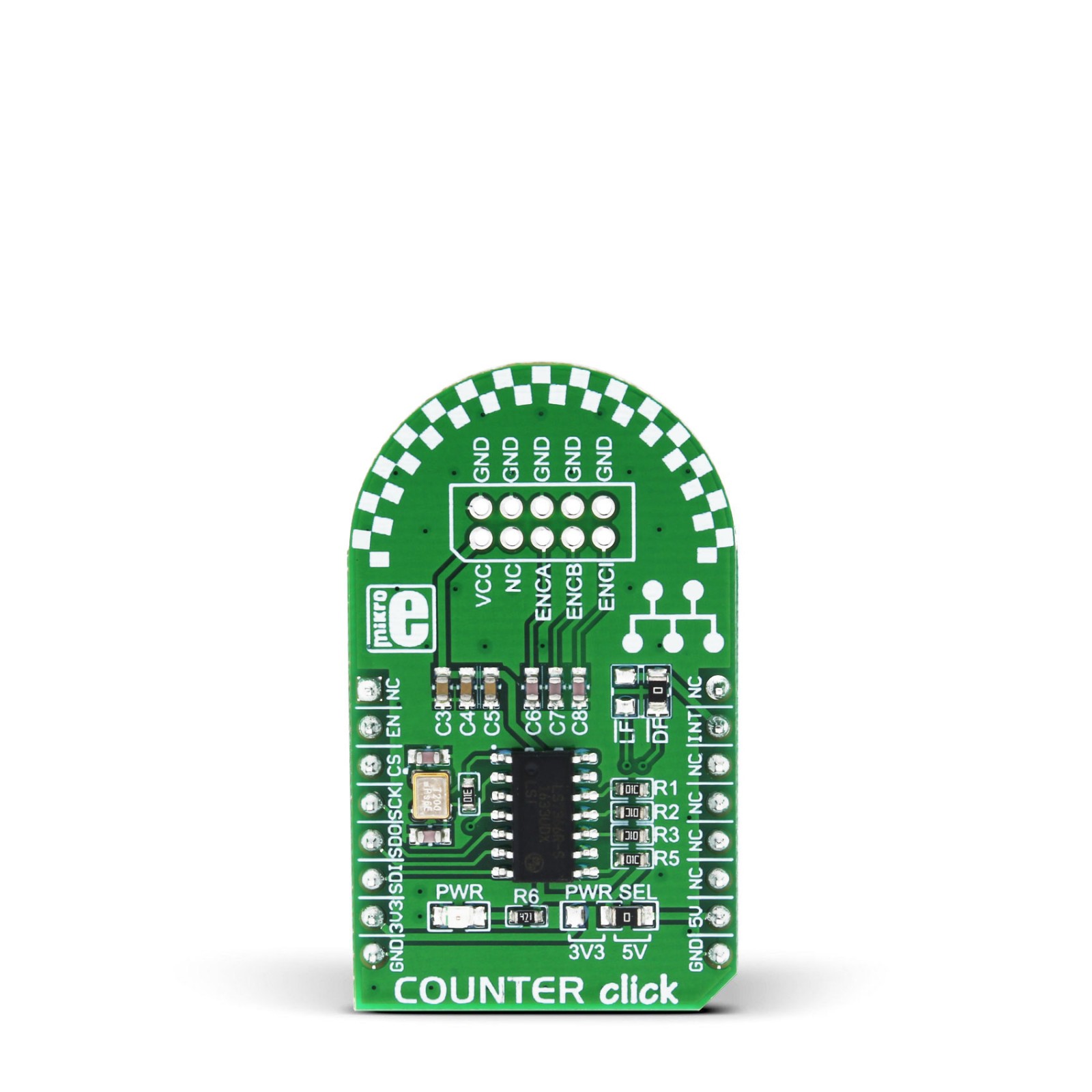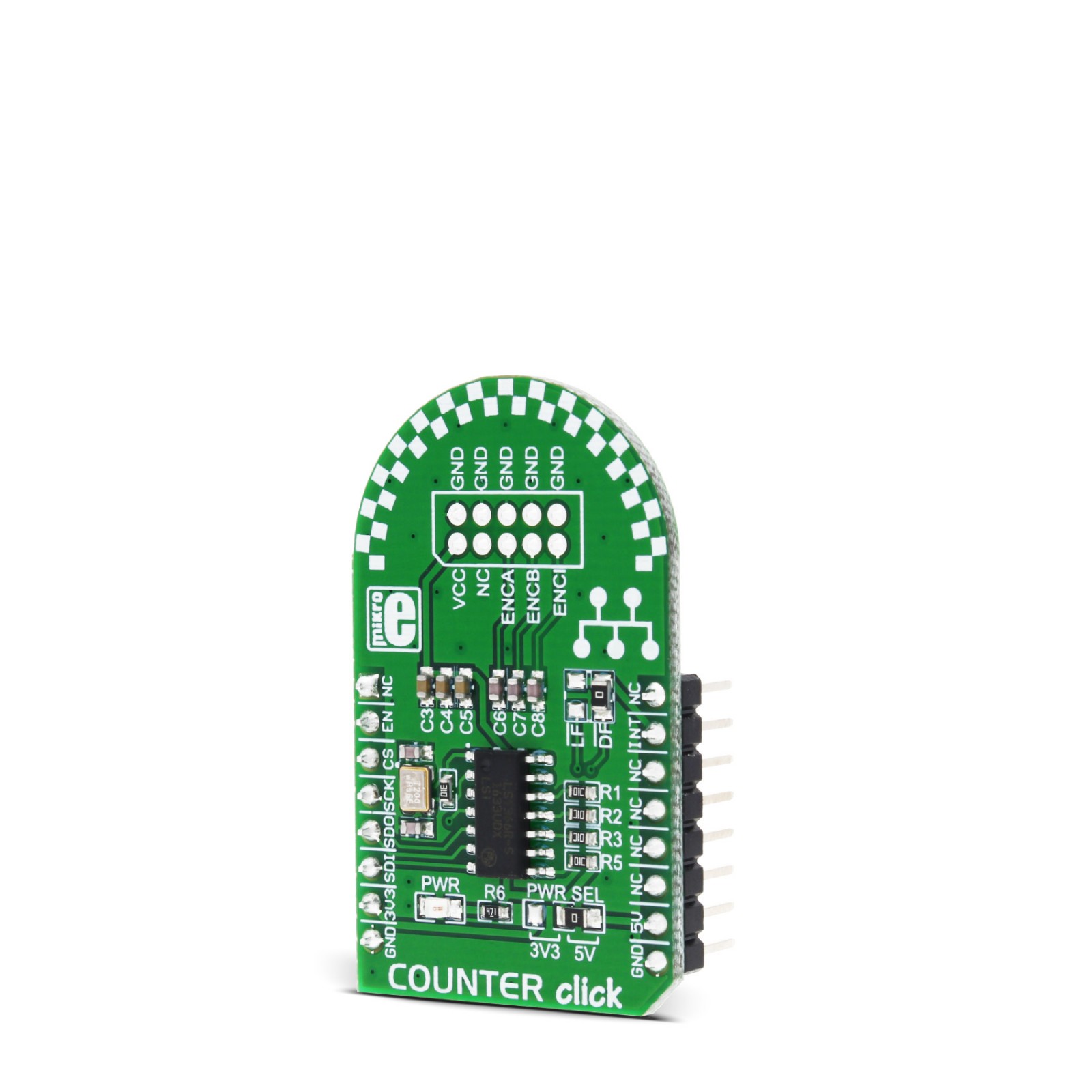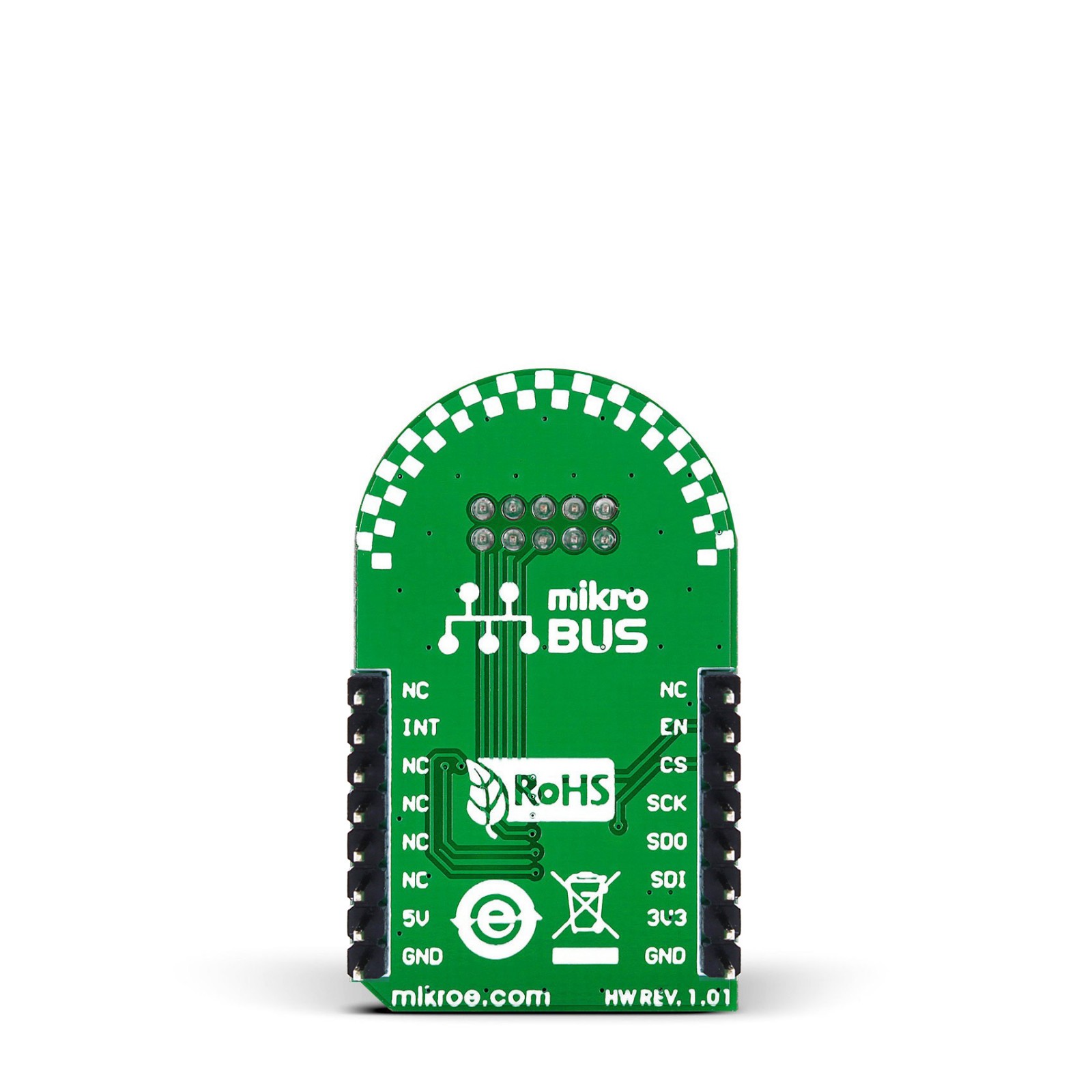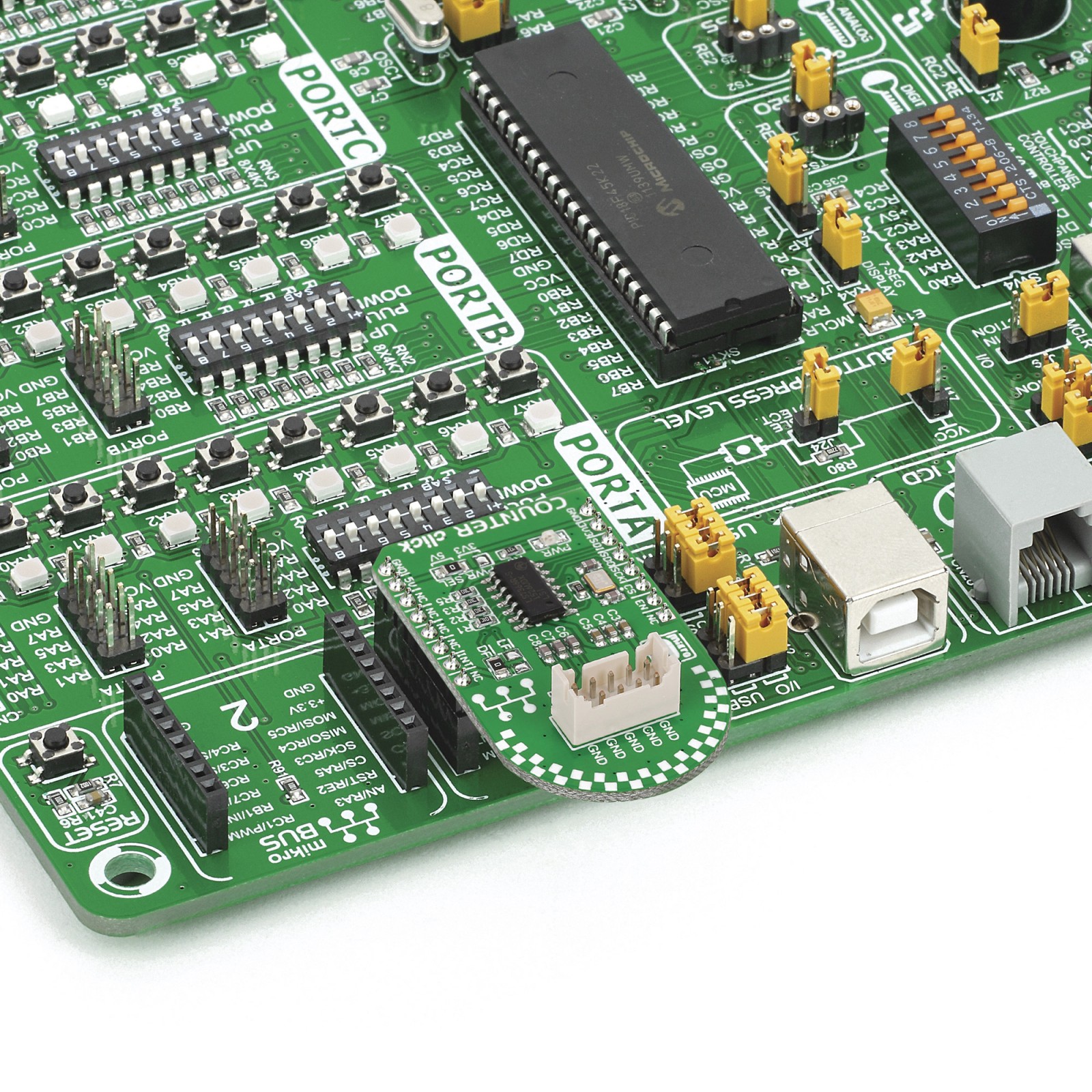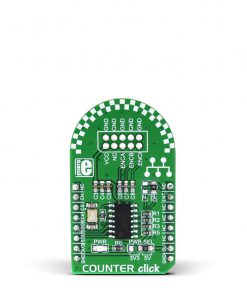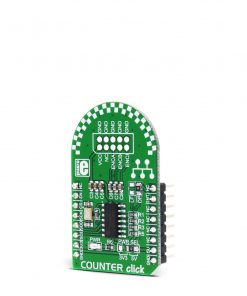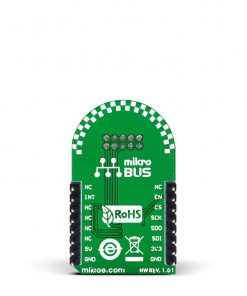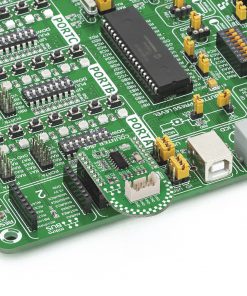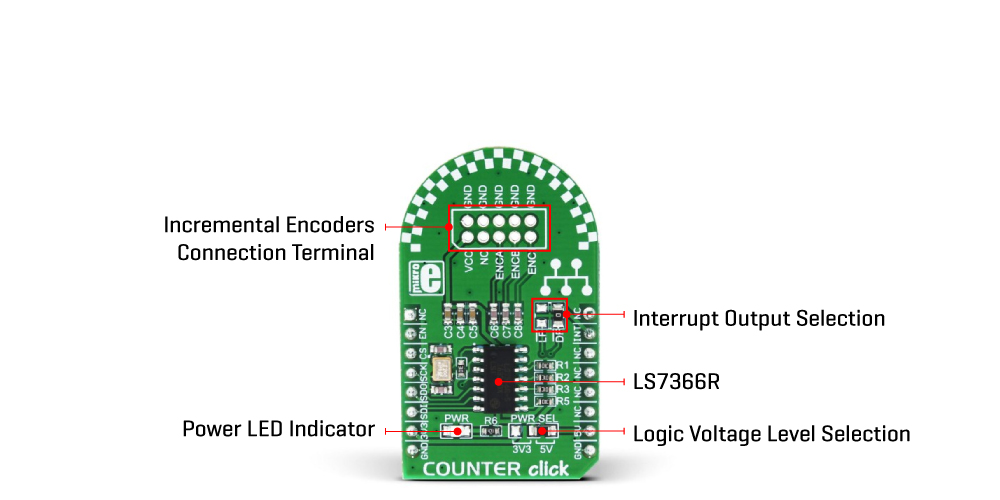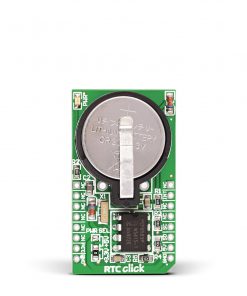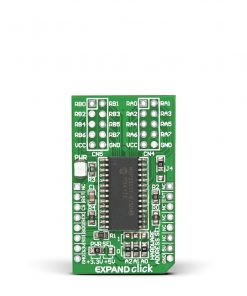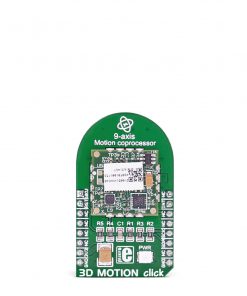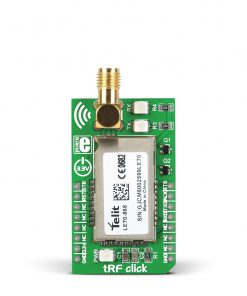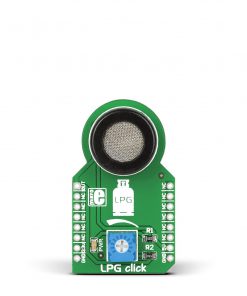Subtotal: R915.00
Counter Click
R560.00 ex. VAT
Counter Click is a compact add-on board that allows you to add a quadrature counter to your design. This board features the LS7366R, a 32-bit quadrature counter with a serial interface from LSI Computer Systems. The LS7366R reads the incremental encoder A and B pulses over unpopulated ten pins header, which are out of phase to each other, ideally by 90°. By decoding them, the LS7366R can determine the direction and speed of the shaft. This Click board™ makes the perfect solution for measuring RPM and speed of DC motor shafts, reading incremental encoders, and more.
Counter Click is supported by a mikroSDK compliant library, which includes functions that simplify software development. This Click board™ comes as a fully tested product, ready to be used on a system equipped with the mikroBUS™ socket.
NOTE: Counter Click comes with an unmounted 2×5 pin connector, allowing users to customize their setup by selecting a different connector that matches the provided pinout. However, the package includes all necessary components for mounting the default connector: B10B-PHDSS(LF)(SN) connector, PHDR-10VS housing, and SPHD-002T-P0.5 crimp terminals.
Stock: Lead-time applicable.
| 5+ | R532.00 |
| 10+ | R504.00 |
| 15+ | R476.00 |
| 20+ | R458.08 |

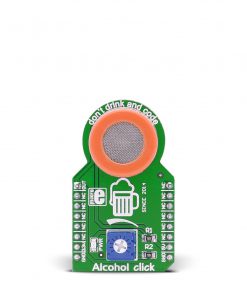 Alcohol Click
Alcohol Click 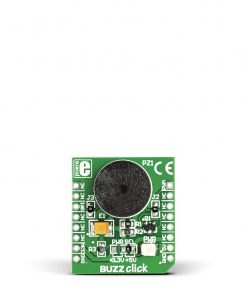 BUZZ Click
BUZZ Click 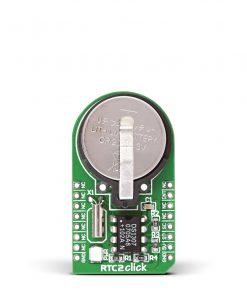 RTC 2 Click
RTC 2 Click 